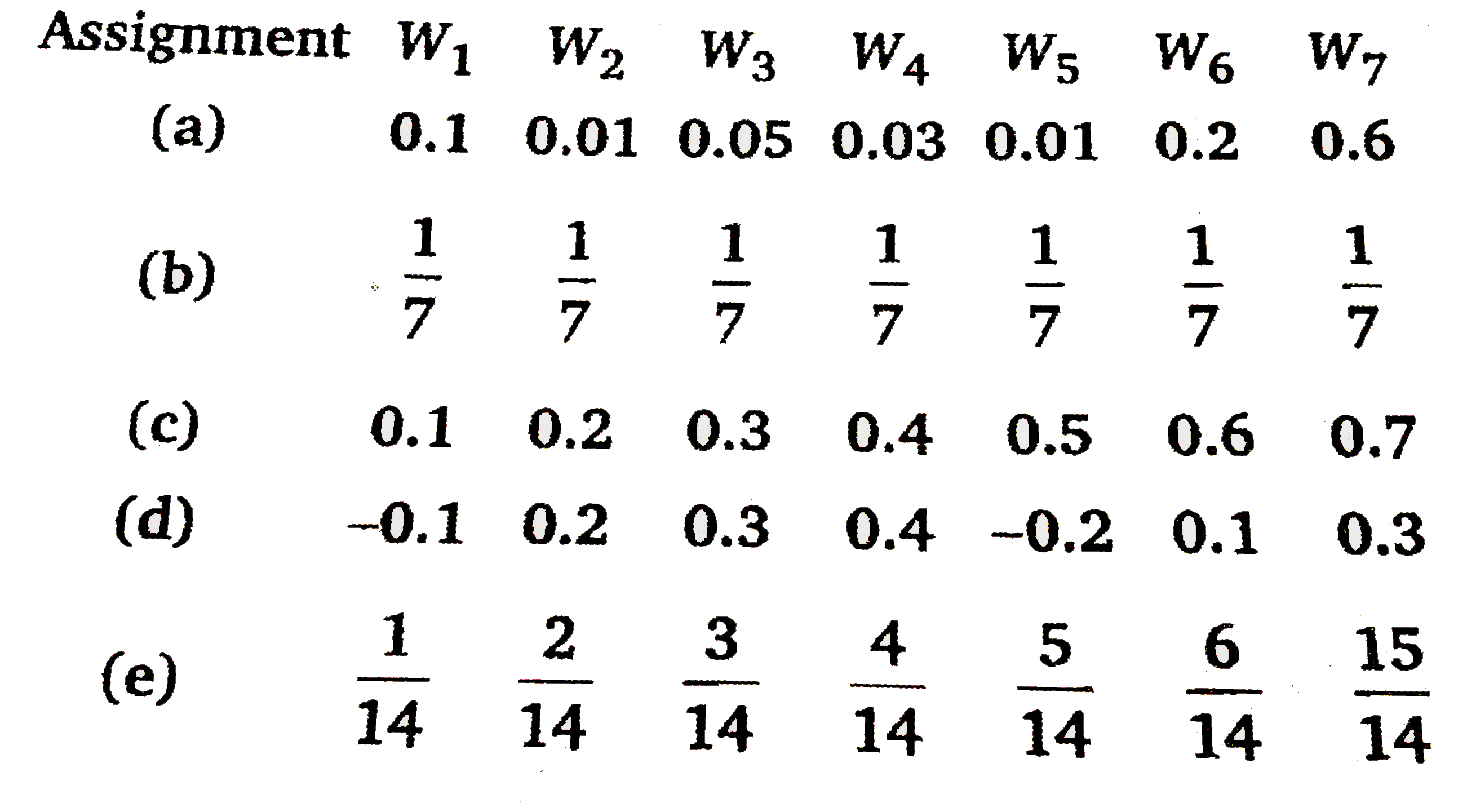When a fair dice is rolled, the number that comes up top is a number between one to six. Assuming we roll the dice once, to check the possibility of three coming up.Solution in Bengali
The elements of A are all multiples of 5. Sum of every pair of elements of A is divisible by 5. Therefore, we have to find the probability that B has two distinct elements whose sum is divisible byy 3.
Let be the set of elements of A of the form 3k, i.e., {0, 15, 30, ..., 195}, be the set of elements of A of the form 3k + 1, i.e., {10, 25, ..., 190}, be the set of elements of A of the form 3k + 2, i.e., {5, 20, 35, ..., 185}. Then = 14, .
If B has at least two elements from , then we are done.
If B contains at most one element of , then it must have at least one element from each of and for which the sum of these two elements will be divisible by 3. So, the required probability is 1.
Topper's Solved these Questions
- BOOK - CENGAGE PUBLICATIONCHAPTER - PROBABILITY I EXERCISE - Exercise 9.16videos
PROBABILITY I
- BOOK - CENGAGE PUBLICATIONCHAPTER - PROBABILITY I EXERCISE - Exercise 9.219videos
PROBABILITY I
- BOOK - CENGAGE PUBLICATIONCHAPTER - PROBABILITY I EXERCISE - JEE Advanced7videos
PROBABILITY I
- BOOK - CENGAGE PUBLICATIONCHAPTER - PROBABILITYEXERCISE - All Questions470videos
PROBABILITY
- BOOK - CENGAGE PUBLICATIONCHAPTER - PROBABILITY IIEXERCISE - MULTIPLE CORRECT ANSWER TYPE6videos
PROBABILITY II
Similar Questions
Which of the following cannot be valid assignment of probabilities for outcomes of sample space S={W1,W2,W3,W4,W5,W6,W7}
 02:54View Solution
02:54View SolutionIf two fair dices are thrown and digits on dices are a and b, then find the probability for which ωab=1, (where ω is a cube root of unity).
01:20View SolutionLet ω be a complex cube root unity with ω≠1. A fair die is thrown three times. If r1,r2andr3 are the numbers obtained on the die, then the probability that ωr1+ωr2+ωr3=0 is 1/18 b. 1/9 c. 2/9 d. 1/36
01:27View SolutionA coin is tossed three times, consider the following events. A : ‘No head appears’, B: ‘Exactly one head appears’ and C: ‘Atleast two appear’. Do they form a set of mutually exclusive and exhaustive events?
02:25View SolutionLet EandF be two independent events. The probability that exactly one of them occurs is 1125 and the probability if none of them occurring is 225. If P(T) denotes the probability of occurrence of the event T, then (a) P(E)=45,P(F)=35 (b) P(E)=15,P(F)=25 (c) P(E)=25,P(F)=15 (d) P(E)=35,P(F)=45
03:43View SolutionA dice is rolled twice. Find the probability that 5 will not come up either time. (ii) 5 will come up exactly one time.
02:06View SolutionThree fair dice,are rolled.What is the probability that three numbers come up form sides of a triangle?
01:39View SolutionFour dice are rolled then the number of possible out comes is :
01:18View SolutionIf three dice are rolled and we make a set of numbers shown on the three dice. How many different sets are possible?
02:29View SolutionSix fair dice are rolled . The probability that the product of the numbers appearing on top faces is prime is
01:11View Solutionఒక పాచికను దొర్లించినపుడు వచ్చు ప్రధాన సంఖ్య మరియు సంయుక్త సంఖ్యల సంభావ్యతల మొత్తము _______
01:07View Solutionఒక పాచికను దొర్లించినపుడు ప్రధాన సంఖ్య వచ్చు సంభావ్యత ...
01:11View SolutionFour dice are rolled then the number of possible out comes is
01:48View SolutionA fair dice is rolled once. The probability that an odd number less than 5 turns up is ______________ and the probability that a number greater than or eual to 3 turns up is _____________.
01:36View SolutionWhen a dice is rolled, the six possible outcomes are ________.
03:35View SolutionA dice is rolled once. What is the probability that the number on top will be
Greater than 5View Solution

